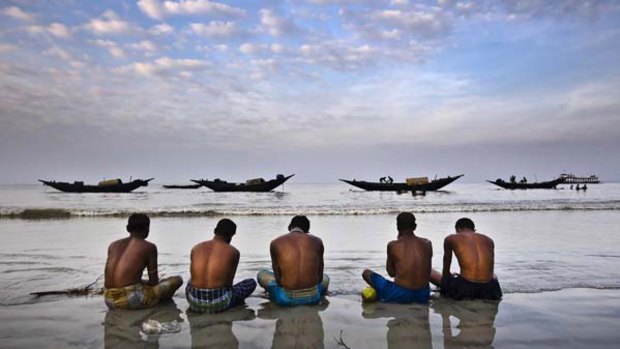By Gabriella Coslovich
HIS name is Badol and his eyes speak of a profound grief and a wounded determination to carry on. Badol is a rice farmer from the coastal village of Padma in Bangladesh. Three years ago the area was one of the worst affected when one of the deadliest cyclones in years hit the country.
Cyclone Sidr, which lashed the coast with 240km/h winds, killed more than 3300 people and left 2 million homeless. Nine of the dead were Mr Badol's relatives, including his wife.

Rodney Dekker documents the aftermath of 2007's Cyclone Sid on Bangladesh in his exhibition Tides of Resilience, at East St Kilda's Obscura Gallery.
His unflinching portrait is one of 35 images being shown by Melbourne photographer Rodney Dekker, who travelled to Bangladesh in 2008 to document the aftermath of Cyclone Sidr. His exhibition, Tides of Resilience, opened at East St Kilda's Obscura Gallery yesterday.
As its title suggests, the exhibition is also about hope and recovery. In one photo, the child survivors of Cyclone Sidr joyously play leap-frog in the playground of their temporary school. Twenty-three children from the Padma primary school were killed, a third of its students.
Bangladesh is one of the countries most vulnerable to the effects of climate change. Fierce cyclones and devastating floods are a constant, but are expected to become more extreme as a result of global warming. The country also faces the threat of rising sea levels. The United Nations Intergovernmental Panel on Climate Change predicts rising sea levels will devour 17 per cent of Bangladesh by 2050, displacing at least 20 million people.
Dekker, a former environmental scientist who worked for state and federal government agencies, turned to photography four years ago to give a human face to the effects of climate change.
In many ways, he feels he is able to have more of an influence on people's awareness about climate change as a photographer than as a government officer.
Dekker has little time for climate change deniers and is deeply dismayed by the Australian government's response to the challenge.
''They're dragging their feet,'' he says. ''It's very well documented in the scientific literature that this is a real issue and the challenge of our times.''